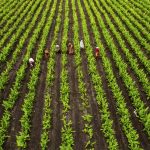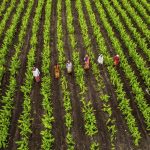Creating a farm plan is essential for any agricultural operation, regardless of size or type. A well-structured farm plan not only helps in maximizing efficiency but also serves as a roadmap for achieving long-term goals. By understanding the different components of a comprehensive farm plan and leveraging modern tools and technologies, farmers can enhance productivity, reduce waste, and ultimately improve their bottom line. This article will explore the key aspects of creating an effective farm plan that promotes maximum efficiency.
Understanding the Importance of a Comprehensive Farm Plan
A comprehensive farm plan acts as a guiding document for farmers, detailing their operational strategies, resource management, and financial goals. It allows for a clear understanding of what needs to be accomplished, helping farmers to allocate their resources effectively. With a robust plan in place, farmers can identify their strengths and weaknesses, enabling them to make informed decisions that enhance productivity.
Moreover, a farm plan helps in risk management. Agriculture is not without its uncertainties, including weather fluctuations, market prices, and pest threats. A well-thought-out plan includes contingencies for these challenges, ensuring that farmers are prepared for unexpected events. This proactive approach not only mitigates risks but also fosters resilience in the face of adversity.
Lastly, a comprehensive farm plan aids in sustainable farming practices. By integrating environmental considerations into their planning, farmers can implement strategies that promote biodiversity and resource conservation. This not only helps in protecting the ecosystem but also enhances the farm’s long-term viability, ultimately contributing to a more sustainable agricultural industry.
Key Components to Include in Your Farm Planning Strategy
When devising a farm plan, several key components must be considered. First and foremost is a thorough assessment of the farm’s current resources. This includes understanding soil health, climate conditions, water availability, and existing infrastructure. By evaluating these factors, farmers can make informed decisions about crop selection, livestock management, and input costs.
Another critical component is financial planning. This involves creating a budget that outlines expected expenses and revenues, allowing farmers to assess their profitability potential. A financial plan should include both short-term and long-term projections, enabling farmers to allocate funds efficiently and identify areas where they can reduce costs or increase investments.
Lastly, incorporating a timeline into the farm plan is essential for tracking progress and ensuring timely execution of tasks. Creating a seasonal calendar that outlines planting dates, harvest schedules, and maintenance activities provides a structured approach to farm management. This timeline not only promotes accountability but also helps in identifying potential bottlenecks, ensuring that all operations run smoothly.
Tools and Technologies to Enhance Farm Efficiency
In today’s digital age, technology plays a pivotal role in enhancing farm efficiency. Precision agriculture tools, such as GPS-guided equipment and soil sensors, allow farmers to monitor and manage their crops with unparalleled accuracy. These technologies enable farmers to apply fertilizers, pesticides, and water only where needed, significantly reducing input costs and environmental impact.
Moreover, farm management software has transformed the way farmers develop and implement their farm plans. These software solutions offer features like budgeting, inventory tracking, and labor management, allowing farmers to streamline operations and make data-driven decisions. By centralizing information and improving communication, these tools enhance overall farm efficiency.
Additionally, the use of drones for aerial imaging and crop monitoring has revolutionized farm management. Drones can quickly assess crop health, identify problem areas, and monitor irrigation systems, providing farmers with valuable data that can inform their decision-making processes. This not only saves time but also enables farmers to respond proactively to issues before they escalate, ultimately leading to improved yields.
Monitoring Progress: Adjusting Plans for Optimal Results
Once a farm plan is in place, monitoring progress is crucial to ensuring its success. Regular reviews of key performance indicators (KPIs) can provide insights into how well the farm is meeting its goals. Metrics such as yield per acre, input costs, and labor efficiency should be tracked consistently, allowing farmers to identify areas for improvement and make informed adjustments.
Additionally, maintaining flexibility within the farm plan is essential for adapting to unforeseen circumstances. Whether it’s a sudden change in weather patterns, market fluctuations, or pest infestations, being able to pivot and adjust strategies can mean the difference between success and failure. Farmers should regularly assess their operational strategies and be willing to update their plans as new data becomes available.
Incorporating feedback from team members, agronomists, and other agricultural professionals can also enhance the farm’s adaptability. Open communication fosters a collaborative environment where everyone can contribute valuable insights, leading to more effective problem-solving. By continuously refining their farm plans based on real-time data and expert advice, farmers can achieve optimal results and ensure their operations remain competitive in an ever-evolving industry.
In conclusion, creating a comprehensive farm plan is vital for maximizing efficiency and achieving long-term success in agriculture. By understanding the importance of a well-structured plan, incorporating key components, leveraging modern technologies, and continually monitoring progress, farmers can enhance productivity while mitigating risks. As the agricultural landscape continues to evolve, a proactive and adaptive approach to farm planning will be essential for meeting the challenges of tomorrow and ensuring the sustainability of food production for future generations.










